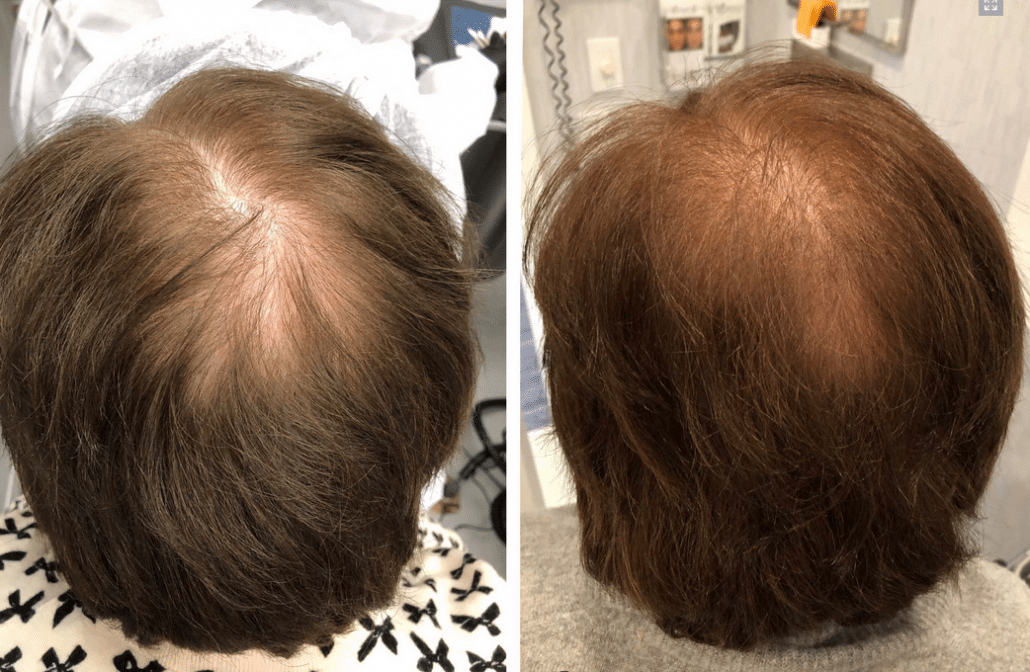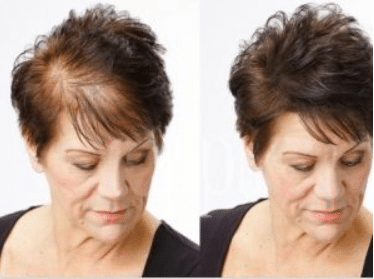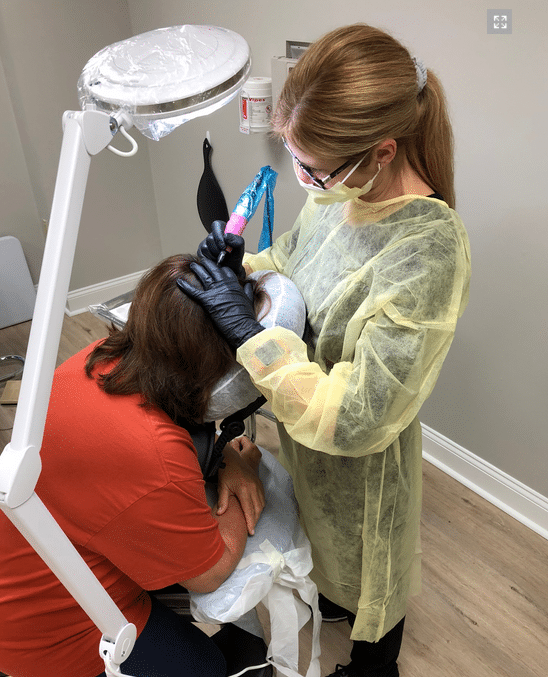Scalp Micropigmentation
People suffering from alopecia or any other condition that causes hair loss can benefit greatly from SMP (scalp micro-pigmentation). Whether it’s used for adding density to thinning hair or completely restoring a hairline, it offers perfect, undetectable results almost instantly and with very minimal inconvenience and aftercare.
Using cosmetic tattoo, we deposit tiny amounts of pigment into the scalp to replicate hair follicles. It is a completely natural, non invasive treatment that gives the appearance of tiny hairs growing out of the scalp that can completely restore the hairline and add density to thinning hair.
SMP may be used in combination with platelet rich plasma, or PRP to give the appearance of extra fullness during the hair regrowth process. SMP is a hair loss solution that is beneficial for both male and female alopecia.
When compared to other options such as highly invasive and expensive hair transplant procedures and drugs that have a multitude of side effects, SMP offers a welcome alternative. The client can completely get back their confidence over a few short visits without the risk or cost of other options.
The pigments used in these procedures have been formulated to match and perfectly blend with your skin tone and hair color.
If you are interested in SMP, areola tattoo or scar camouflage, please contact Medi Ink at 917-753-6225 to schedule your consultation.”
Hair Loss Treatments
Hair loss, or alopecia, can occur as a result of aging, genetic predisposition, medications or an underlying medical conditions. It can affect men and women of all ages. Individuals may lose hair in patterned baldness, patchy spots or thinned hair. Hair loss is a frequent cause of frustration, embarrassment and even severe emotional distress for individuals who suffer from it, so treatment of the condition may become a psychological, if not a medical, necessity.
Fortunately, while many people are forced to deal with hair loss and for some it may be a permanent condition, there are several treatments available to disguise hair loss or to promote hair growth. Depending upon the location and extent of the hair loss, wigs and hairpieces may be suitable options. In other cases, treatments to promote the growth of hair through the use of medication, ultraviolet light therapy, or hair transplantation may prove to be effective solutions.
Medications
Topical medications for hair loss, such as Rogaine, may help to restore hair by stimulating hair follicles to grow new hair or to enlarge existing hairs. Such medications must be taken continuously to be effective.
For men with male-pattern baldness, or androgenetic alopecia, hormone-based medications, such as Propecia, may be prescribed. Oral hormone preparations, however, have not been approved by the FDA for use in women since they have been shown to increase the risk of birth defects.
When hair loss is a result of autoimmune disease, corticosteroids may be administered to suppress the immune system and prevent it from attacking the hair follicles. Corticosteroids prescribed for hair loss may be administered topically, orally, or by injection.
Psoralen with Ultraviolet Light Therapy
Psoralen with ultraviolet light therapy, of PUVA, can be a successful means of treating hair loss. Psoralen is a medication that increases the skin's sensitivity to ultraviolet light. When it is combined with medically administered ultraviolet light, the treatment is known as PUVA therapy. PUVA has been shown to be effective in treating hair loss resulting from the immune disorder alopecia areata and from aggravated psoriasis. The Psoralen used in PUVA treatment may be applied topically or administered orally. Complications of this treatment may include nausea from the medication and the possible risk of skin cancer or cataracts from the exposure to ultraviolet light.
Hair Transplantation
The most effective treatment options for hair loss usually include surgical hair transplantation. These procedures have been performed successfully for many years with minimal downtime for patients and negligible damage to surrounding hair follicles.
Follicular Unit Transplantation
Follicular unit transplantation, or FUT, is a surgical procedure in which hair is transplanted from one area of the scalp to the targeted area. Hair is transplanted as individual hair follicle units, typically moved from the back or sides of the head to the frontal balding regions of the scalp. Each transplanted unit consists of one to four individual hairs.
The surgical procedure may last from 5 to 10 hours and is performed under local anesthesia. For some patients, only one session is required. In other cases, the procedure may have to be repeated. Some soreness and numbness is to be expected after the procedure. Normal hair care can usually be resumed within a week. The results of the FUT procedure are usually visible within 3 months after treatment. The closer in color the hair is to the skin, the more successful the results of the FUT are likely to be. FUT can be performed in many areas of the body. Commonly, follicular unit transplantation is performed as:
- Temporal peak restoration to combat male-pattern baldness
- Eyebrow replacement
- Eyelash replacement
Follicular unit transplantation represents a significant improvement over the "hair plugs" or transplants previously used. Smaller modern follicular units, as well as micrografts, have many advantages over the larger skin grafts used decades ago. They heal more quickly, involve less discomfort, and provide more aesthetically pleasing results.
Skin Lifts and Grafts
Another surgical method of treating hair loss in a skin lift or graft. During this procedure, a "flap" of hair-bearing skin near the balding area is lifted through precise surgical cuts and then rotated to cover the area where the hair is thin or absent.near the balding area. The flap is then rotated onto the balding section.
Scalp Reduction
Scalp reduction is another surgical procedure for treating hair loss. It involves tightening the scalp so that hair-bearing skin from the back and sides of the head is pulled toward the crown. Hair may then be transplanted to the remaining bald area at the top of the head. This procedure is now rarely performed since it had a tendency to create scarring.





